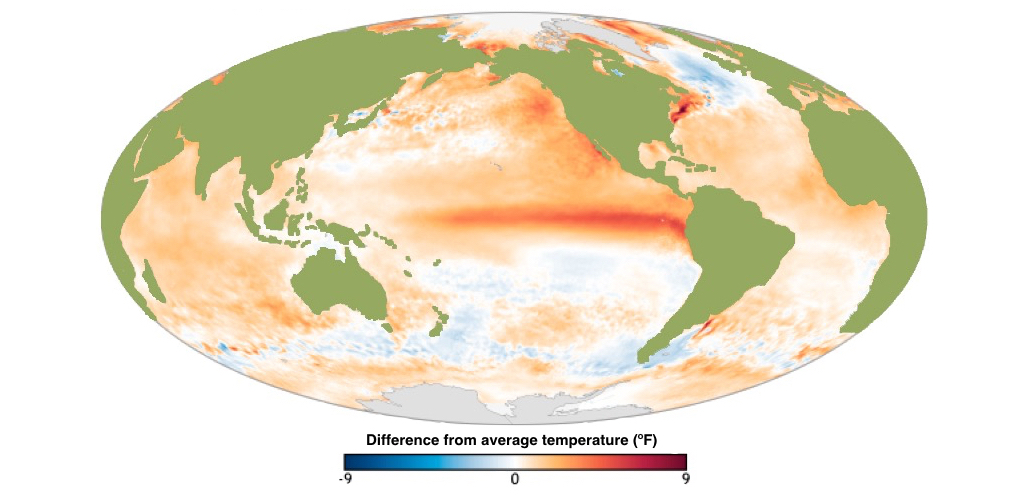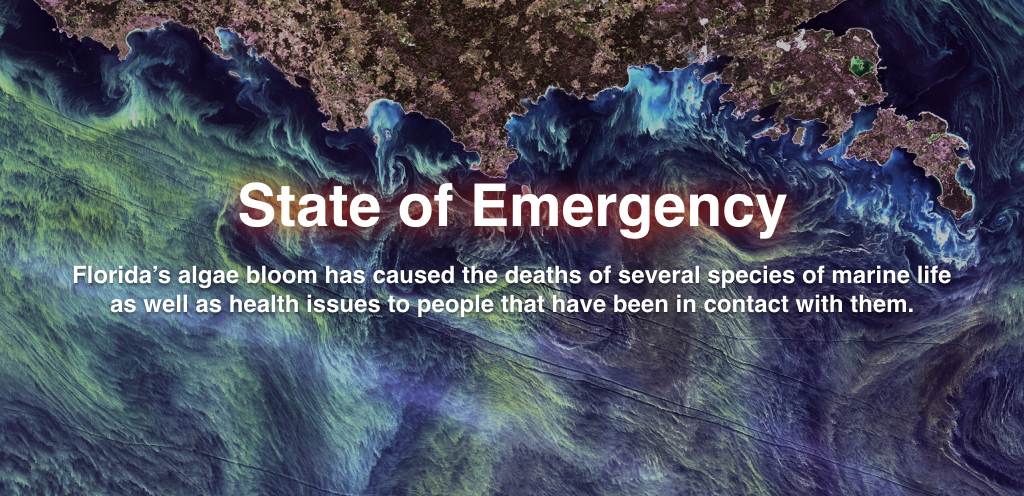Last year saw several records in the Earth’s climate system broken.
The American Meteorological Society alongside the National Oceanic and Atmospheric Administration (NOAA) and over 450 leading scientists from around the world all confirm that 2015 was the warmest year on record for land and sea temperatures. Last year, average temperatures rose by 1ºC higher than Preindustrial times. At the widely publicized United Nations COP21 meetings in Paris, 1.5ºC above preindustrial averages was pegged as the upper limit for climate change. We are getting so close to this limit that some scientists are already talking about a possible overshoot, which would have disastrous effects on our climate, biomes and all aspects of human activity, especially in securing the global food supply.
Worldwide sea surface temperatures in 2015
Compared to the 1981-2010 Average
 Source: NOAA
Source: NOAA
One of the causes of this temperature rise was a particularly long and severe “El Niño” climate events. According to the NOAA: “El Niño and La Niña are complex whether patterns resulting from variations in ocean temperatures in the Equatorial Pacific.” While this weather phenomena is a natural part of the air and sea current cycles, the intensification of drastic weather experienced around the world, such as storms, droughts and floods, is a clear result result of such drastic climate change over the last century.
Significant Climate Anomalies
 Source: NOAA
Source: NOAA
Sea currents determine average temperatures in different regions of the planet. Warmer currents in the North Atlantic led to the smallest annual maximum extent of the arctic ice. While fluctuations in the total size of the polar ice caps are indeed a natural part of the cycle, the range of the variation is getting wider and wider with each year. With less polar ice to reflect the sun, more warmth is absorbed by the sea and the atmosphere and making it harder for the temperatures to return to average. The opposite end of the world had the opposite effect. The Antarctic had its fourth largest minimum extent during melting season. This disruption in the long term has caused the sea level to rise by 70 mm above the 1993 average. Low altitude nations in the South Pacific such as in the Tuvalu Islands are the countries with a more imminent threat. Constant flooding not only puts people at risk and their homes, but the salt of the raising tide destroys crops and threatens the long term fertility of the soil.
Rare storms also defined 2015. The first ever hurricane made landfall on Yemen and Morocco received 13 times more rain than the monthly average in barely one hour. In August alone, the North Eastern Pacific basin hosted three simultaneous major hurricanes for the first time since records began more than six decades ago. China experienced their wettest May in 40 years resulting in floods that affected over 75 million people. In a stark contrast, not only South America, Africa and Australia had their top five warmest and driest year but also Alaska, Europe and Northern Asia did so as well.
These record-breaking heat waves and temperatures brought with them secondary issues. Toxic algae blooms as well as cyanobacteria blooms are causing the death of marine life and several health issues for their surrounding populations. Every summer, the blue-green algae bloom in the Gulf of Mexico, caused mainly by the synthetic fertilizers used for agriculture in the southeastern United States, created a dead zone where nothing can grow. This year the area will be the same size as Connecticut. In both coasts of Florida, another algae bloom, which enjoys warmer waters, has caused the deaths of several species of marine life as well as health issues to people that have been in contact with them causing four counties to declare states of emergency.
While 2015 was a difficult year climate wise, 2016 is expected to get worse. The first 6 months of 2016 have already proven to be warmer while also demonstrating rare meteorological conditions. However, the drastic evidence of climate change also led to record breaking investment mobilization to tackle it. Over $US 81 billon dollars were destined by the six largest multilateral development banks to investments in climate change relief, adaptation and prevention. The way we choose our investment strategies will make a significant impact to our climate. Sustainable agriculture, renewable resource energy, waste management and restitution efforts are essential for the restoration of the planet’s health as well as for the development of a prosperous society and global financial system.
Our responsibility as investors, here at Primal, is to focus on projects that not only provide financial prosperity for ourselves but also environmental and social security for the planet.
